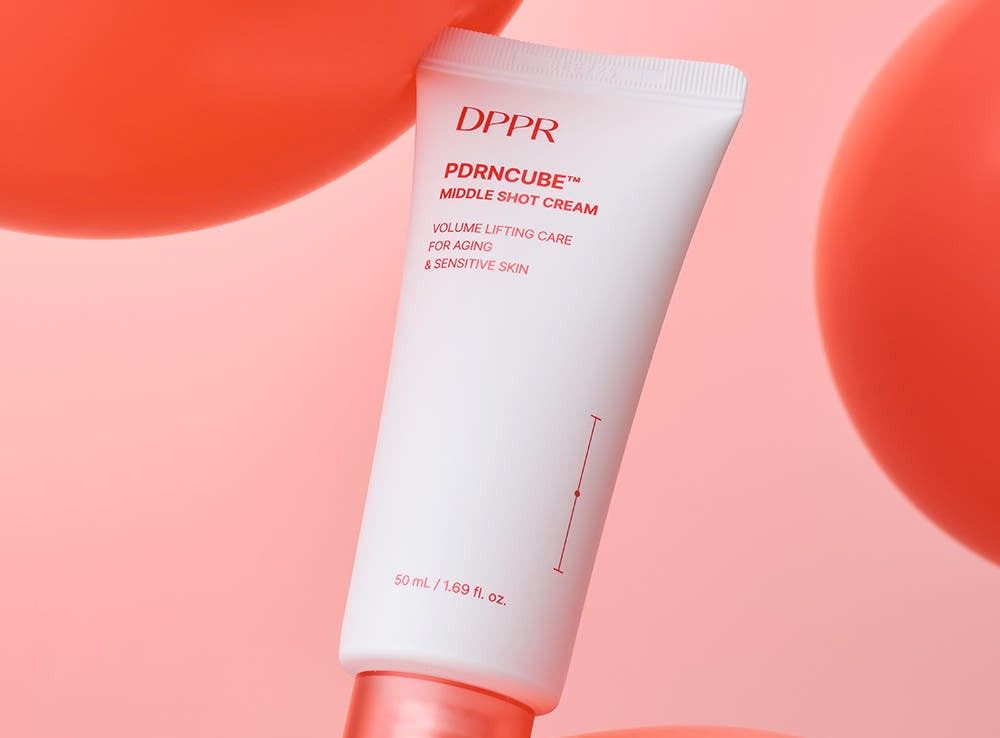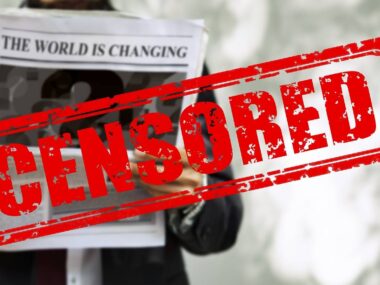Korean beauty brand DPPR launched its PDRNCUBE collection in July 2025 with a bold promise. The line’s Middle Shot Serum and Salmon Egg Cream claimed they could “shrink” or “shorten” the midface, the skin from below the eyes to above the lips.
Of course, there’s no way a cream or serum can alter bone structure and change the shape of your face. It’s scientifically impossible and K-Beauty lovers have ripped the brand to shreds for even making such a claim.
The company created surreal ads to “prove” these outrageous claims. The most famous one is a photoshopped image of a stuffed dog plushie with a shortened face. Their messaging suggested visible changes within four weeks, citing their own clinical trial.
Why Would a Brand Make Such a Claim?
Why would DPPR make such a ridiculous claim about their PDRNCUBE collection? Especially since people would have figured out the truth? Skincare experts confirmed that while PDRN-based serums may improve skin elasticity and hydration, they can’t shorten your philtrum or alter facial bone structure.
So why take the risk? The answer lies in how crowded and competitive the K-Beauty market is. In a sea of bigger brands like Laneige, Dr. Jart+ or Beauty of Joseon, wild claims can feel like the only way to stand out. They’ll go as far as dangling the possibility of a miracle result, even one that defies logic. Small faces are considered attractive in South Korea, so DPPR saw an opportunity to get attention and took it.
What matters is that brands generate buzz, virality on social media, and a boost in sales. It’s a gamble: the chance to grab headlines and trends online, even if the backlash hits hard later.
When Puffery Turns Into False Advertising
It’s one thing for a brand to use puffery, which are those vague, exaggerated phrases like “world’s best cream” or “miracle in a bottle”. They’re phrases that no reasonable consumer takes literally but it does pique their curiosity. It’s another to claim that a topical product can change your bone structure.
False advertising occurs when a statement is both:
- False or misleading: like claiming a serum can physically shorten the midface.
- Material to consumer decisions: that means the claim is central to why someone would buy the product.
DPPR crossed that line. Their campaign relied on language and manipulated imagery to sell their PDRNCUBE line, making it a textbook case of deceptive advertising.
Who’s Most at Risk of Believing?
Not everyone will fall for false claims, but certain groups are more vulnerable:
- Young adults (between 18 and 34) driven by insecurity or beauty ideals may try products out of hope, even if skeptical.
- Older adults who trust authority or sales language, are more likely to accept the claims at face value.
- Consumers under stress, facing personal or emotional hardships, are often more susceptible to “quick fixes.”
- People with low consumer literacy or skepticism may not recognize when marketing has crossed into deception.
DPPR’s marketing strategy likely bet on at least some segment of these groups being curious, or desperate enough to try the products despite the implausibility.
Short-Term Buzz or Long-Term Damage?
What does DPPR really gain from this? Attention. Their campaign sparked jokes, memes, and heated discussion across Korean skincare communities. The brand gained visibility that money alone couldn’t buy.
There are long-term risks for marketing campaigns like this. False advertising causes reputation damage. Regulatory scrutiny could follow, since laws like the U.S. FTC Act or Korea’s Fair Labeling and Advertising Act require substantiated claims. K-Beauty fans might be reluctant to buy anything from DPPR for fear of getting duped.
Why This Matters Beyond DPPR
DPPR’s PDRNCUBE fiasco isn’t just about one brand making a bad marketing call. It’s a look into a wider problem in beauty and wellness advertising. The willingness to exploit insecurities with impossible promises, hoping the hype outweighs the fallout.
For consumers, it’s a reminder to approach sensational claims with skepticism and demand evidence. For brands, it’s a cautionary tale. The short-term spark of viral attention might not be worth the long-term burn of losing credibility.






